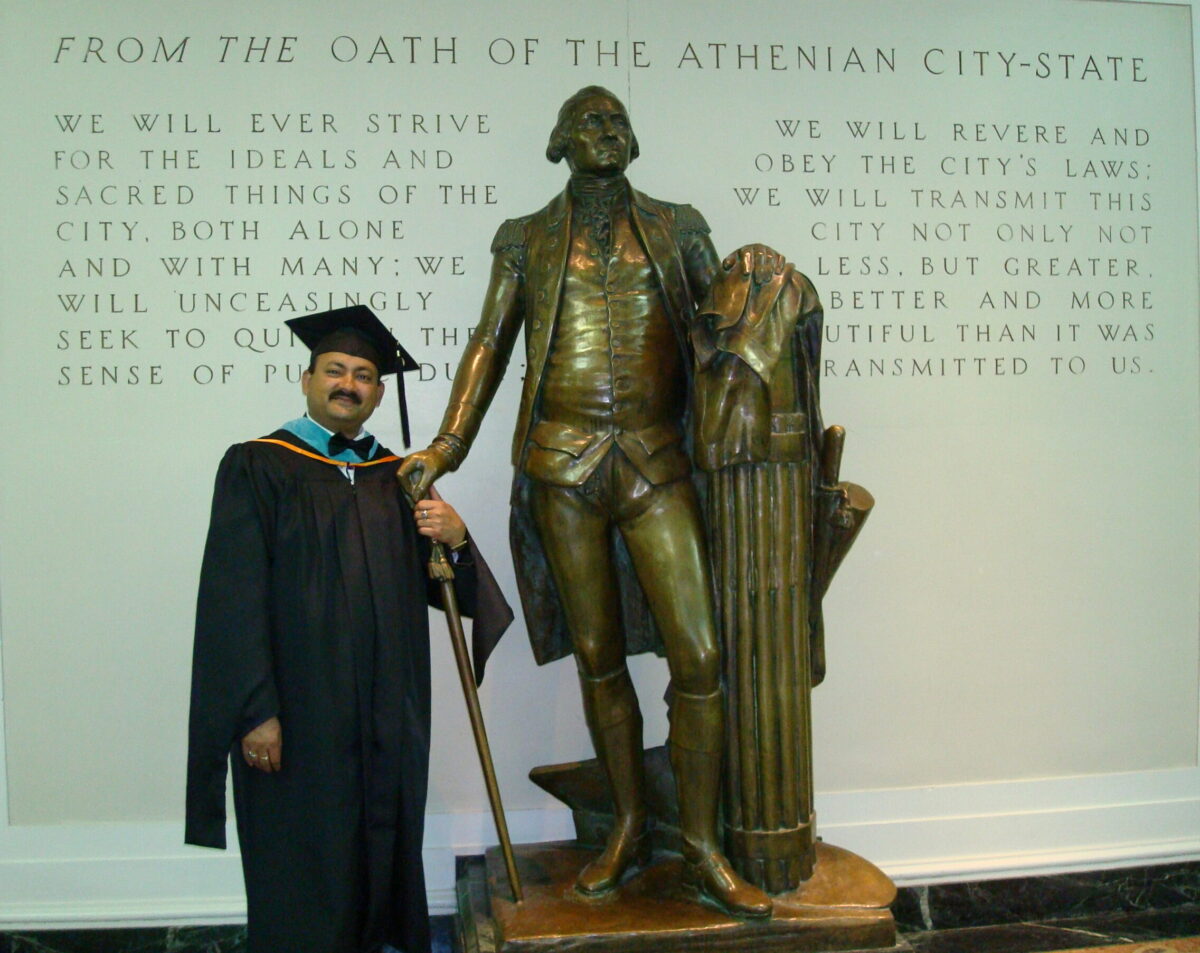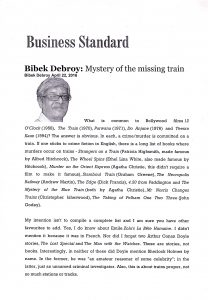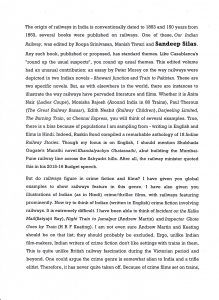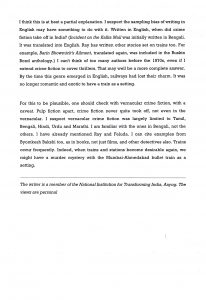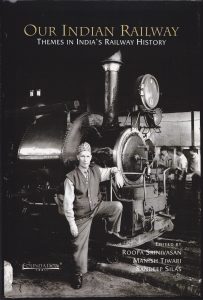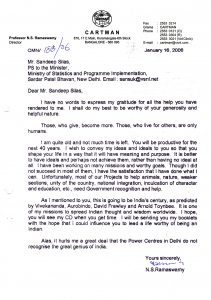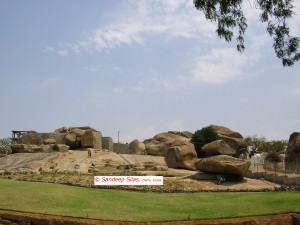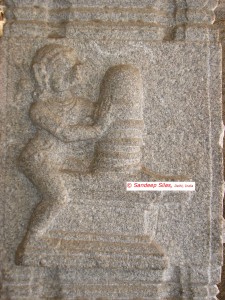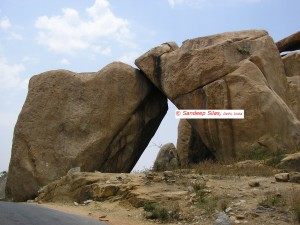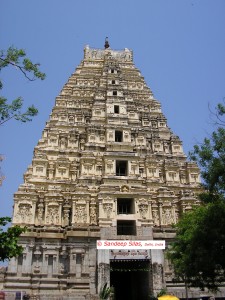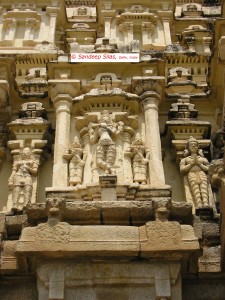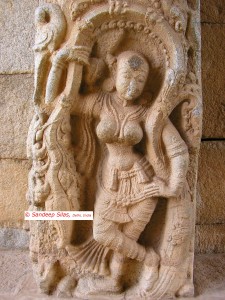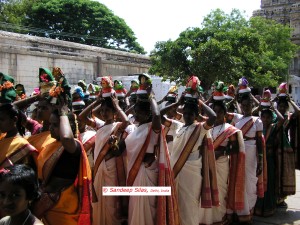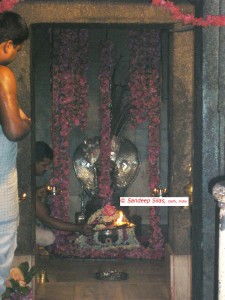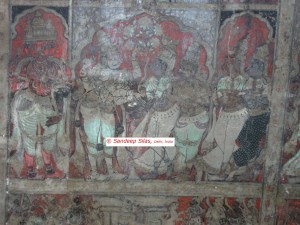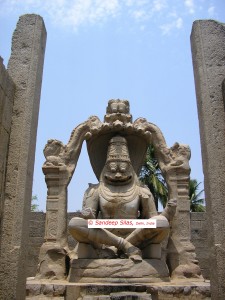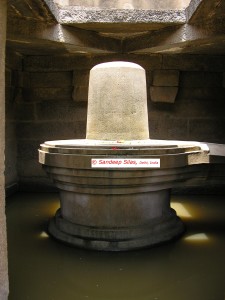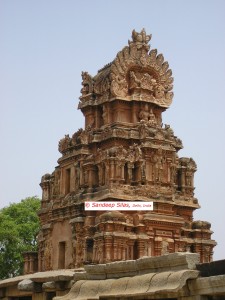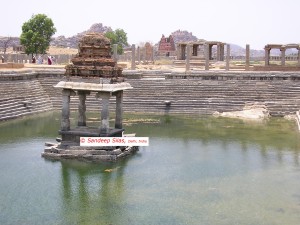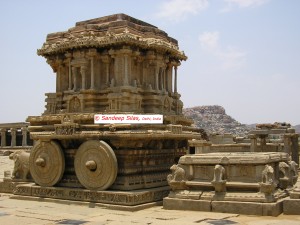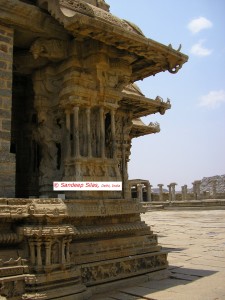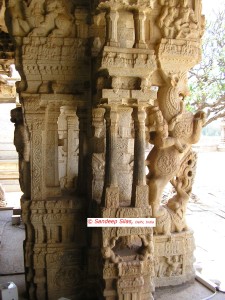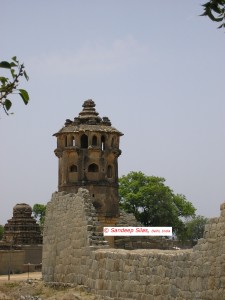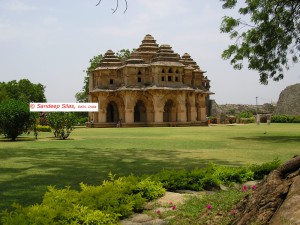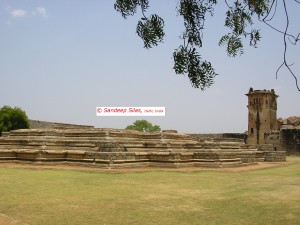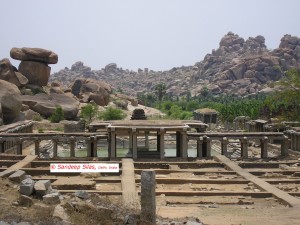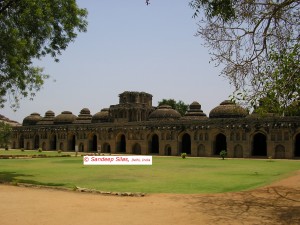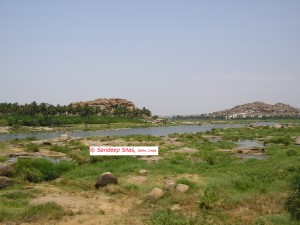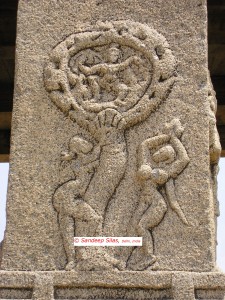One day Mr. Mammen Mathew, Chief Editor & Managing Director of Malayala Manorama Group walked into my room and here is what he felt and what followed later!
Tag: Travelogues
Dr. #Bibek #Debroy appreciates book edited by #Sandeep #Silas
We edited this Book “OUR INDIAN RAILWAY” for the Celebration of ‘150 Years of Railways in India’- Roopa Srinivasan, Manish Tiwari and I, Sandeep Silas. It was part of the mammoth plan conceptualized by me and implemented with the assistance of colleagues all over the Indian Railways.
Nice to find an appreciative mention by Dr. Bibek Debroy, Member NITI Ayog, India.
Remembering #Prof. N. S. #Ramaswamy- his letter from my memorabilia
One day, Prof. N. S. Ramaswamy came to my office in Sardar Patel Bhavan and sat with me for over two hours. I remember a statement he made- “You are like a circus juggler, handling so many hats at the same time”! With humility I mumbled, “That is my expertise and training, Sir”! When he went back he wrote me a letter from Bangalore, which I chanced upon today in my memorabilia.
My personal homage to a great man, thinker, reformer, scientist, educationist and engineer! Above all a great human being!
N. S. Ramaswamy
| N. S. Ramaswamy | |
|---|---|
| Born | 2 March 1926 Puthur, Thrissur district, Kerala, India |
| Died | 17 September 2012 (aged 86) Bengaluru, Karnataka, India |
| Other names | Cartman Ramaswamy |
| Occupation | Management academic Social worker Educationist |
| Years active | 1952–2012 |
| Known for | IIM Bangalore Social service Institution building |
| Spouse(s) | Rajam Parvathi |
| Children | A son and a daughter |
| Parent(s) | N. R. Srinivasa Iyer |
| Awards | Padma Bhushan |
N. Srinivasa Iyer Ramaswamy (1926–2012), popularly known as Cartman Ramaswamy, was an Indian engineer, educationist, management academic and writer, and the founder director of the Indian Institute of Management, Bangalore.[1] He was the founder of Centre for Action, Research and Technology for Man, Animal and Nature (CARTMAN), a non governmental organization working for region-relevant and appropriate technology transfer to rural areas[2] and Indian Heritage Academy, an organization involved in propagating Indian cultural traditions.[3] He was also the founder chairman of the Adarsh Vidya Kendra (AVK) Group of educational institutions.[4] The Government of India awarded him the third highest civilian honour of the Padma Bhushan, in 2006, for his contributions to society.[5]
(Source: Wikipedia)
Video uploaded by Prof. N. S. Ramaswamy
#Award & #Public #Felicitation at #Agra, India
On February 19, 2017, the Maratha Sewa Sangh and Backward Minorities Front (non-political) organized a Public Felicitation Ceremony at AGRA (India) on the occasion of Shivaji Jayanti and conferred the Bharat Gaurav Samman (Pride of India Award) for remarkable and outstanding public service in governance!
First public award in hometown Agra !
These lovely people forever changed my concept of a public felicitation…
Reminded of the Song- Ye public hai, ye sab jaanti hai, ye public hai….. (The people know it all, nothing escapes their eyes!
The spirit behind the public service front, Shri Jitendra Yadav ji- a grassroot leader of exceptional energy, admirable conviction, and commitment to public service! People like him spend their lifetime making and changing India!
JAI HIND !
Vision From Above by Sandeep Silas
(The Pioneer Oct 23, 2001)
Aasraa by #Sandeep #Silas ‘deep’
…contd.
Shelter
She has started liking me thus immeasurable
Without a reason she comes to meet me everyday
Neither she is afraid of gossips or being discovered
She has become captive of my eloquence and verse
How can I say to her all those couplets before the world
Those I have written to narrate to her in privacy
Slowly-slowly her footsteps are now moving ahead
She remembers all things sans reason and meaning
Tomorrow she will come again like the morning breeze
The gardener waits like the desire of a blossoming rose
Aasraa by Sandeep Silas ‘deep’ in Ranai-e-Khayal (2012)
Translated Book in English available on Amazon Kindle:
https://www.amazon.in/BEAUTIFUL-THOUGHTS-Sandeep-Silas-ebook/dp/B0080RNI7C
![BEAUTIFUL THOUGHTS by [Silas, Sandeep]](https://images-eu.ssl-images-amazon.com/images/I/51T%2BzYeK4uL.jpg)
For original Hindi version of Ranai-e-Khayal please contact me
#The #Roman #Connection by #Sandeep #Silas
arikamedu_kerala-india_you-november_december-2011-1
#HAMPI: #City of #Dreams by #Sandeep #Silas
There are some people in the world who dream and forget; there are those who dream and dare.
Hampi, the last capital of the great Vijayanagar kingdom was one such dream. In this dream of the King, there was nothing missing—palaces, temples, baths, water tanks, market, platform to watch festivities, watch towers, elephant stables, long covered corridors, aqueducts and fortifications. And this was not bare. Each pillar of a palace or a temple’s gopuram and vimana, doorway, passage, was affectionately adorned with statues of gods, goddesses, humans and animals. The roof was a story in itself—on it was painted a legend or a complete scene. A 15th century muslim envoy, Abdul Razaq, was forced by the beauty of Hampi to remark—“The city is such that the pupil of the eye has never seen a place like it, and the ear of intelligence has never been informed that there existed anything to equal it in the world”. The historians, Nuniz and Paes, praised the city as being greater than Rome, its palaces plated with jewel encrusted gold, simply ‘the best provided city in the world.’
First, to the name Hampi. It is said that Goddess Hampi (Parvati) attained Lord Shiva on the banks of the River Tungabhadra that flows through Hampi.
On her name lives the city and now the World Heritage Site. There is a Ramayana connection also with Hampi. It was originally known as Kishkindha, the monkey kingdom of the great monkey faced King Sugriva, who assisted Lord Rama in the fight against demon King Ravana of Lanka. Later, two brothers, Hakka and Bukka raised Hampi to a city in AD 1336. In the centuries that followed Vijayangar Kingdom surpassed all others in wealth, fame and status between the 14th and 16th centuries.
When I first arrived in the vicinity of Hampi, I was struck by the sheer beauty of the landscape strewn with boulders. Amazing shapes and designs peeped out of most naturally placed boulders.
How an earth could a heavy boulder be resting for ages on a smaller one? How could the wind and rain have shaped another like a pillar? How could two huge rocks be so moved to rest in a standing position converged at the top? There was despair and hope, both written across the landscape by the boulders.
The approach to the main living shrine, the Virupaksha Temple is across a hill. Dropped in the midst of the market place, the erstwhile Hampi Bazaar, I was moved to view with awe the sheer magnificence of the temple gopuram. In those days the gopurams used to tower above the earth.
Built in pyramidal style, profusely ornamented by statues of gods, goddesses and attendant females, this one makes you feel so alive.
Statues of voluptuous females with slender waists, adorned with ornaments, fill up corners of the rising structure. They reveal the concept of beauty and the popular style of jewellery worn in the period. Should your look be a lingering one, there is a possibility that life may fill up the statue and she may come towards you!
A group of women, walking in a row of three, dressed up in the colours of the Indian flag, marched decisively towards the shrine for worship. On their heads was carried puja material and an offering of coconut. They had a band of dancers and drummers following as accompanists. The whole atmosphere was charged.
The presiding deity inside the shrine is Shiva, represented by the lingam. Sprinkled flowers, coconut water, ritual of aarti performed by a flame of fire and the smell of incense completed the picture of worship in an Indian temple. Heads bowed, prayers were offered and the devotees trooped out on the other side.
I stopped to look at the frescoes on the ceiling. The colours have faded but the scene of Shiva’s marriage with Parvati is still visible in its completeness. The celebration is painted in natural colours and comes out with a vibrance that is visible unmistakably in the poise and the eyes of the godly couple.
Out of the temple, I climbed up the bend and halted at the monolith Ganesha. He sits inside the room in his glory while in the pillared hall outside dance maidens on the many pillars, their movement frozen in stone. I move further to a large green arena at one end of which is another Ganesha, much smaller, but sitting in the same style, gazing at the pillared hall in front. A nondescript road takes me further to the Ugra Narsimha.
Again a monolith statue, it now stands alone, as the structure above it was perhaps victim of pillage and destruction at the hands of invaders. The 6-7 meter tall Lakshmi Narasimha has an angered look on his face as he determinedly sits cross-legged. Just next to it is a small round tank, roof open, in the midst of which is a huge rock lingam, the Badavilinga. The water was still and sunlight opened a window on the water surface, half bathing the lingam with light.
I resumed my exploration as I entered the Hazara Rama Temple. The gopuram here is much smaller in dimension and rather full of signs of decay. Two amazing statues of women in dance poise, I caught on the sides as I entered the gate.
Just outside on the other side of the road is a water tank with steps leading down to the water. A covered corridor resting on pillars runs around reminiscent of the style of the Great Roman Baths.
More surprise followed later as I stood face to face with the first stone chariot I had ever seen in the Vithala Temple precincts.
Drawn by miniature elephants it is elaborately carved and has stone wheels that actually move. A ladder is placed in front to enter the chariot.
The biggest wonder is caged in the 56 elaborately carved hollow pillars of this temple. These emit different musical notes! Ever heard of musical notes emanating from stone pillars?
I tapped on one, then another, yet another dazed in ear and eye. How could music be caged in stone? What combination of arithmetic and art was employed to make them sound different and yet combine like in an orchestra? It is sound engineering of the highest order! It is a musical offering of stone to the gods! What better way to please the gods in heavens above! India in any case worships 33 crore deities so the music from these stone pillars will have to emanate equal numbers of days even if it is for one god each day!
The master craftsmen of Hampi, the master musician, and of course the vision of the King as the one who conceptualized the entire setting deserve kudos. I must mention the name of the great King Krishnadevaraya to whom Hampi owes much of its magnificent buildings.
A signage calling aloud ‘Lotus Mahal’ moved our steps. There was an outer wall blocking the view of the interior buildings. This indicated that it was the preserve of the Queen and other ladies.
Inside was a water tank to the right now overgrown with weed and wedded to neglect. To the left a platform is reminder of the royal ladies watching the Mahanavmi celebrations from its vantage position. On both sides of the enclosure are watch-towers, placed diagonally, from where eunuchs guarded the ladies of the Mahal.
In the center of the garden is an exquisite palace, called Lotus Mahal, residence of the Chief Queen.
Two storeyed, carved archways running through, ornamented on the exterior like the dress of a bride, the Mahal has a certain delicacy about it that pleases. It is said that this building was inspired by the beauty of a woman!
A strong desire to see the magic of Hampi come alive, filled up my mind. In my imagination water started filling up the tank, the rustle of silk in Lotus Mahal and oh, those dainty whispers, started wafting out. Soon the caparisoned elephants started lining up outside and eunuchs busied themselves. Dusk was approaching and earthen lamps were lighted all around, their flame protected by the niches that housed them in the walls.
There is no light more romantic than that of diya! When hundreds of them spring to life all about you there is no escaping their warmth. The Mahanavami Dibba became a focal point as royal ladies assembled there to watch fireworks in the city. The sky was soon ablaze with colours and so were the hearts of those who secretly desired someone.
The ruins of Hampi possess a power to captivate the mind’s eye and enthrall a visitor by the warmth of their images that are captive of the times that have gone by.
I walked out on the other side of the ladies enclosure and came to two huge buildings, one used then for the elephants as a stable, and one for their masters.
Further beyond are three small buildings, one of which my guide tells me was the massage and beauty treatment house for the royal ladies!
You hear more stories as you explore more. The King’s Balance is a place where the King was weighed in grain or gold that went for distribution to the poor. The Queen’s Bath is a lovely tank surrounded by arched corridors and lotus shaped fountains under which frolicked the royal ladies.
More excavations are revealing more facets of city life. The Muslim Sultans of the Deccan combined in war frenzy in 1565 AD and attacked this Hindu Kingdom. What followed was destruction, plunder and loot. Somebody won, somebody lost and Hampi was finished forever.
The river Tungabhadra crosses the Hampi valley meandering over rocks and becoming the silver line of this cloud. The river banks at Anegundi village are haven for tourists who wish to stay more at Hampi seeping slowly the beauty of the plundered city. The fortress town of Anegundi is trying to bravely revive the traditional arts of Hampi and the effort is laudable.
Yet in its ruins, those survived, there is a truth written all over; the truth of human endeavor, the truth of human beauty and excellence.
What Time then buried, Time is now revealing in faint blips of ecstasy and wonder!
#ISTANBUL…#Sweet and #spicy by #Sandeep #Silas, published in #The #Hindu
ISTANBUL Besides its famed mosques and tourist spots, this ancient city offers a heady mix of spices and herbs in its bazaars, experiences Sandeep Silas
TURKISH DELIGHT Yes, Istanbul is very crowded but this vibrant city is full of life and rich in history
Istanbul had long teased my imagination. I had heard of it as glorious Constantinople, in the days of the Byzantine Roman Empire, its subsequent fame under the Ottoman’s, as Istanbul. It is a city which has contributed to political power, civil law, codes, art and culture, architecture and religion for many centuries and has today become a bridge between tradition and modernity. It has entered into the realm of cities those that have shaped civilisation and impacted the world. The whole problem was where to begin. There was so much to absorb at the same time. I quickly learned that it was built on seven hills. But where are the hills? Human habitation has quietly placed all the seven hills firmly under its seat. Yes, Istanbul is crowded.
The most famous monument I visited had this unmistakable stamp of history and the ages of Constantinople. The Hagia-Sophia is pronounced Aya-Sophia. This Church-Mosque-Museum of faith has been built thrice. The name means ‘divine power’ and the saga of its history says — 1,000 years as church, 500 years as mosque and thereafter museum. As it stands today, it was built during the reign of Emperor Justinanus and opened in 537 A.D. The plan is traditional basilica with a central dome. Together with three naves and its 107 columns it forms a splendid edifice. You look around and up and you keep wondering how huge it is and how delicately it has been decorated. Gold, silver, glass, colourful stones have been used to create an unparalleled effect. The grand mosaic work of the 6th Century is visible on the walls. A celebrated spot for the crowning of emperors was the famous mosaic floor under the central dome.
It was turned into a mosque by Sultan Mehmed II in 1453 A.D. after Istanbul’s conquest. The Mihrab, pulpit, muezzin gathering place, preaching table, were added inside Hagia-Sophia in 16th & 17th centuries. More precious gifts came in from Suleiman the Magnificent and the later sultans.
Spectacle of faith
Once Turkey became a republic, Hagia-Sophia became a museum. What is of immense value today to humanity is the presence of the Mihrab and the mosaic image of Mother Mary holding infant Jesus at the same place — one on the ground, the other on the roof. It conveys the oneness of humankind and so much of God. I enjoyed this spectacle of faith present here because of history unfolding the way it did, now become a grim reminder and unifying symbolism. I greatly treasure the time spent here watching the carved pillars, discovering the seal of Theodora and Justinian in the columns, the other mosaics, the weeping column (originally part of the Temple of Artemis in Ephesus) and the streaming sunlight from the many windows of Hagia-Sophia.
 True respect for different religions inside Haiga-Sophia
True respect for different religions inside Haiga-Sophia
In front of this Blue Mosque is the Hippodrome, now known as Sultanahmet Square. It was built by Roman emperor Septimus Severus in 203 A.D. and served as a meeting place for politicians, for chariot races and such other activities. Two Egyptian obelisks stand in the square sculpted with animals and motifs.
 Stained Glass inside Blue Mosque
Stained Glass inside Blue Mosque
The jewels and precious thrones inside Topkapi Palace remind you of the ultimate luxury in which sultans lived and ruled. First a Byzantine Acropolis in Seraglio overlooking the Marmara Sea, Bosphorus and the Golden Horn, it became the residence of the Ottoman sultans. It was built between 1460 and 1478 A.D. over 70,0000 square metres. The Bab-i-Humayun Gate separated it from the city and the Bab’us Selam connected it to the inner courtyard. All the administrative buildings are in this section. Most of the Turkish treasures are displayed in the museum here. Crowns, necklaces, the 86-carat Spoon Maker’s diamond, rubies and emerald studded turbans, weapons including Nadir Shah’s famed emerald dagger, thrones, porcelain, manuscripts and murals are not only captivating in sight but also in terms of being witnesses of history. Amongst the most holy and precious exhibits are the Staff of Prophet Moses, the hair from the beard of Prophet Mohammed, the cup and coat of The Prophet and his holy mantle. Little did I know that the most famous opera of Wolfgang Amadeus Mozart, “The Abduction from the Seraglio”, completed in 1782, is inspired by a sad tale, with Topkapi (Seraglio), as the scene of an agonising separation! It tells of a Spanish nobleman, Belmonte, whose beloved has been kidnapped by pirates and sold to The Pasha who dwells in Seraglio. Dolmabahce Palace, on the bank of the Marmara Sea, became home for the sultans from 1856 A.D. onwards. It was ordered to be built between 1843 and 1856 A.D. Two interesting facts about Dolmabahce deserve mention. One, that its architectural design has eclectic elements from Baroque, Rocco and Neo-Classical styles blended with traditional Ottoman architecture. Second, that about 14 tonnes of gold in the form of gold leaf was used to gild the ceilings of the 45,000 sq. metre mono-block palace! The world’s largest Bohemian crystal chandelier in this hall, a gift from Queen Victoria, has 750 lamps and weighs 4.5 tonnes! Now, people flock here to see Mustafa Kemal Ataturk’s deathbed in Dolmabahce. The founder President of Turkey died in this room in November 1938 after an illness.
At the Egyptian Market, the Nazar Boncuk was everywhere. It characterises Turkey, protecting the holder from affectation by the evil eye. Two tastes and colours were prominent here—a sweet called Turkish Delight and spices.
I think these are the two distinctive tastes of Istanbul—sweet and spicy! Spicy, in the sense of taste that enhances the flavour; and sweet, which makes time measure up to a cup of delight! My last image while leaving Istanbul is of the Byzantine City Wall, which has been preserved wherever possible.
The wall has crumbled with ravages of time, empires have been broken, the republic is born, and Nazar Boncuk now keeps Istanbul safe.
(Published in The Hindu, February 13, 2012)
Note: Except opening picture, all other photographs added now
Link:
http://www.thehindu.com/todays-paper/tp-features/tp-metroplus/sweet-and-spicy/article2886865.ece
An enchanting village by #Sandeep #Silas, published in #The #Hindu
#Yvoire One of the most beautiful villages in France, Yvoire is full of flowers and cheerful local population, writes Sandeep Silas
A VISUAL TREAT A charming village house, with lace curtains, flowers and enveloped in greenery form a real romantic setting
G ive me a choice to choose a place to live the rest of my life. An idyll by the lake, amidst flowers livening up my window; stone houses those seem to have travelled back in time; thin pedestrian lanes without any machine monster emitting black smoke; spires surprising you at the end of a street; a village market that comes up informally in the square; laced window panes; lazy boats in the lake; and great food. Yes, I am talking of Yvoire, a village in France, a member of the most beautiful villages of France.
Barely 45 minutes from Geneva, creeper roses welcomed me at the entrance. Flowers seem to be the passion of every inhabitant. Each window was like a beautiful vase distinctive in colour and presentation. Ranked in France as one of the “Four Flowers”, Yvoire is full of flowers – lilies, gourdon, iris, roses, daffodils, gerberas, poinsettia, wisteria vines and the rosemary bush.
Yvoire is located in the Rhone-Alps region of France under the department of Haute-Savoie. This small village, just 3.2 sq km. with a population of 810 only, has access to two faces of Lake Geneva, as it separates the “petit lac” from the “grand lac”. The village just celebrated its 700 years of existence in 2006. Set in the 14th Century, as usually done then with fortifications, a castle, ramparts, mansions, and stone houses, the village continues to look the same. The St. Pancras Church that dominates the village heights dates to the 11th Century but has been rebuilt and attended many times. Its slender green-onion like dome is representative of Savoyard and Piemontese religious architecture of later centuries.
Homes were not homes, they were more! Some had portions running as boutiques selling designer garments, locally made souvenirs, cheese and cakes, and a lot doubled up as restaurants. Survival had placed the village between the horns of “character” and “commerce”. It obviously gets a lot of tourists who come to dip their souls into the sponge of delight for a day.
From the square, under the church steeple, you can buy things you may not need, but would like to take back. Though each window here was very beautifully done, one particularly caught my attention from the square. A vivacious green Boston Ivy creeper half encircled it, with purple, pink, and red gerberas raising their sprightly heads from the pot placed on the window-sill. Each leaf of the creeper had three tongue-like lobes, one each to taste the sweet, sour and salty breeze, I thought. Behind the glass window-panes was a beautiful lace curtain. Only a face, like that of Helen of Troy was missing. A perfect window for a Romeo and Juliet conversation!
A village surviving since 1306 AD in the same time warp is an amazing spectacle to visit and see. In its earlier years it was on the trade map through the Alps and along the Lake Geneva. In the 16 {+t} {+h} Century fishing became a primary occupation for the residents.
Now, in the 21s {+t} Century it is heritage that makes the place important. Actually, I felt that the place has been blessed because its importance over the centuries never diminished despite changing times and trade preferences.
Invigorating
Past paper boats hanging in the air I moved to the lakeside. Walking down a stone paved path beside yellow lilies was invigorating. Once beside the water I sat down to look at the mountains. Across the Lake Geneva (Lake Léman) are visible the Jura Mountains. A pair of ducks frolicking in the water accentuated my loneliness. Couples sat, walked and boated enjoying every moment of togetherness. I resumed my walk and halted at a letter-box made in cast iron, fixed on the outside wall of a home. It had a rider on his horse, embossed on the front face. Its letters – “ LETTRE”, and its stylisation immediately transported me back to the medieval ages when horses served as car, train and plane. Another wooden door to a godown carried a pasted poster appeal carrying instructions, with this slogan at the end of the page – “Vive La France! Vive L’ Empereur!” This was how official orders/notifications were communicated to the public in those days. Lunch was freshly caught fish from Lake Léman, what else!
The faces I recall from this trip were unusually charming – a woman with two spaniels under a signboard, the boy at the cake shop, the woman who entered the boutique hurriedly, the man making a straw hat, and the girl who served us food in the restaurant. The names, those people gave to describe their homes and themselves – Les Murailles, La Maison Fleurie, La Maison d’ Historie, La Gangière, La Bentellière and Coup d’ Coeur, continue to stay in my memory. Especially Coup d’ Coeur, as between the suspended flower baskets from the balcony, at the entrance, were hung many red coloured hearts made of round pieces of wood glued together. I left my heart amidst the wooden ones in France, beating for someone.
(Published in The Hindu, December 27, 2010)
Link:
http://www.thehindu.com/todays-paper/tp-features/tp-metroplus/an-enchanting-village/article981735.ece
